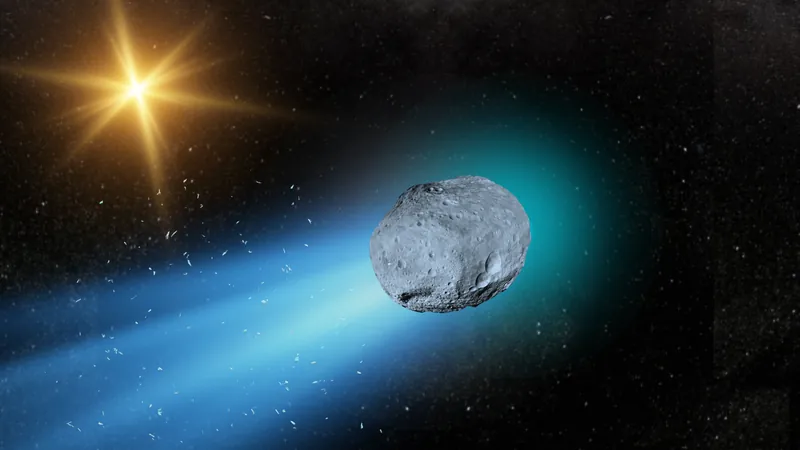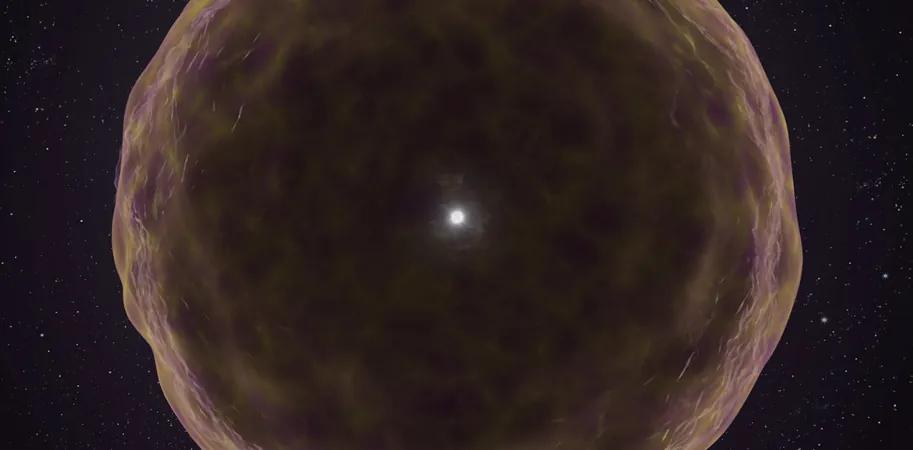
Bizarre Comet 3I/ATLAS: A Time Capsule of Ice Older Than Earth!
2025-07-23
Author: Michael
In an astonishing breakthrough, scientists have unveiled that the newly identified interstellar comet 3I/ATLAS is brimming with water ice that could be as old as 7 billion years—predating the formation of our solar system!
This fascinating celestial visitor isn't just a frozen ball of ice; it's also packed with a cocktail of organic molecules, silicates, and carbon-based minerals, making it strikingly similar to asteroids found in the outskirts of our solar system's main belt.
The discoveries were made using advanced instruments like SpeX aboard the NASA Infrared Telescope Facility on Hawaii’s Mauna Kea and the Gemini Multi-Object Spectrograph at the Gemini South Telescope in Chile.
Discovered on July 1 by the ATLAS survey telescope, 3I/ATLAS is only the third interstellar object to glide through our solar system, following the trailblazing 1I/'Oumuamua in 2017 and the enigmatic 2I/Borisov in 2019.
Astrophysicists speculate there might be as many as 1 million interstellar wanderers cruising through our solar system at any given moment, potentially hiding out in the Oort cloud—a vast treasure trove of comets at the solar system's fringes. Studying 3I/ATLAS and its interstellar kin could uncover secrets about conditions in far-off planetary systems.
"3I/ATLAS is an active comet, showcasing a visible coma. This indicates it's enclosed in a significant amount of water ice," said Bin Yang, the leading researcher from Universidad Diego Portales. "The most thrilling discovery was the identification of water ice features in its coma."
A comet's coma is the cloud of gas and dust that forms around it, and by employing spectroscopy, scientists can unlock the secrets of what these ice-laden comets are made of.
Although no gas emissions have been detected yet, Yang and his team noted that 3I/ATLAS has striking similarities in its spectral properties to D-type asteroids—bodies rich in organic molecules and silicates.
"The spectrum we observed aligns with a blend of Tagish Lake meteorite material and water ice, hinting at a mixture of organics, silicates, and carbonate minerals alongside abundant water ice," Yang revealed.
This remarkable comet could shed light on the Milky Way’s evolutionary history, as it’s believed to originate from a region with stars that formed 2.5 billion years before our own sun ignited 4.6 billion years ago.
If the water ice detection is confirmed, it could represent some of the oldest, untouched water ever recorded—formed in a foreign planetary system and preserved meticulously during its cosmic journey.
Yang underscored that further analysis is necessary for a definitive identification of the compounds surrounding 3I/ATLAS, but these findings already represent a potential turning point in astrophysical understanding.
"As the third confirmed interstellar visitor, studying 3I/ATLAS as it nears its closest approach to the sun presents a unique opportunity to observe the behavior of interstellar material under solar influence—an event of immense scientific value," Yang elaborated.
With additional data anticipated from major telescopes like the Very Large Telescope and Keck Observatory, the team hopes to cement their findings and search for gas emissions as this icy comet glides closer to the sun, undoubtedly keeping scientists engrossed for years to come!









 Brasil (PT)
Brasil (PT)
 Canada (EN)
Canada (EN)
 Chile (ES)
Chile (ES)
 Česko (CS)
Česko (CS)
 대한민국 (KO)
대한민국 (KO)
 España (ES)
España (ES)
 France (FR)
France (FR)
 Hong Kong (EN)
Hong Kong (EN)
 Italia (IT)
Italia (IT)
 日本 (JA)
日本 (JA)
 Magyarország (HU)
Magyarország (HU)
 Norge (NO)
Norge (NO)
 Polska (PL)
Polska (PL)
 Schweiz (DE)
Schweiz (DE)
 Singapore (EN)
Singapore (EN)
 Sverige (SV)
Sverige (SV)
 Suomi (FI)
Suomi (FI)
 Türkiye (TR)
Türkiye (TR)
 الإمارات العربية المتحدة (AR)
الإمارات العربية المتحدة (AR)